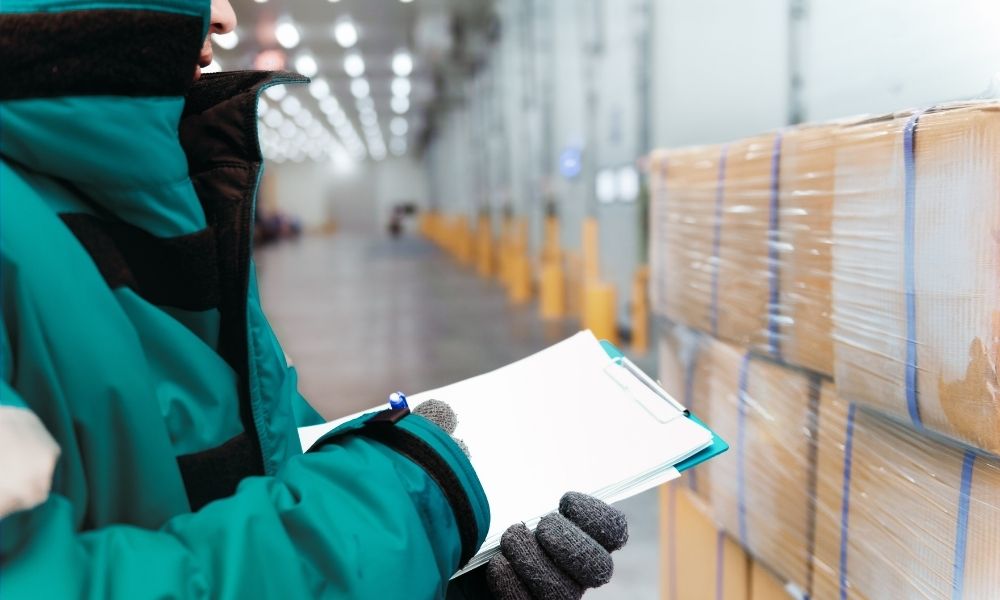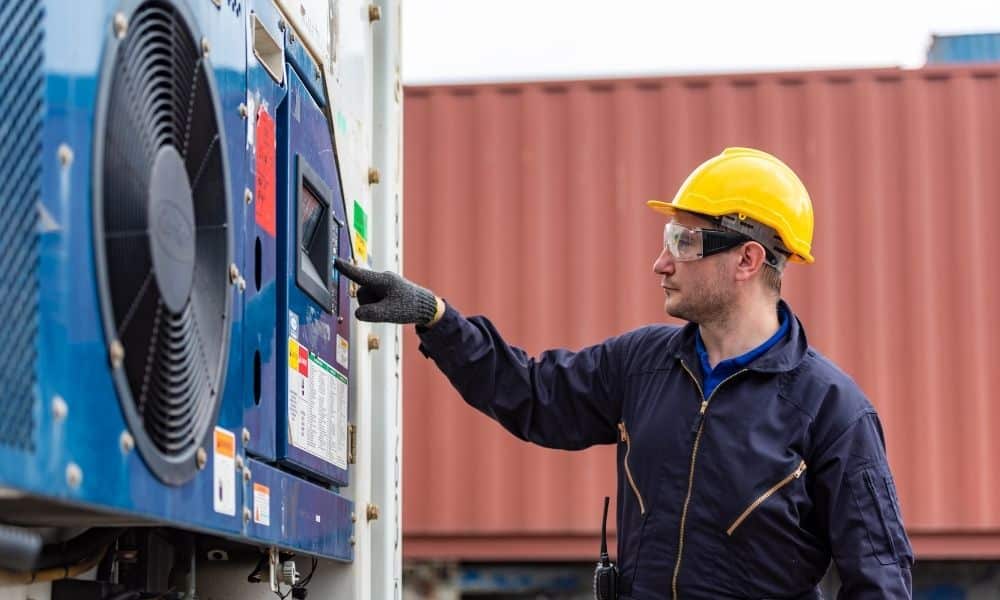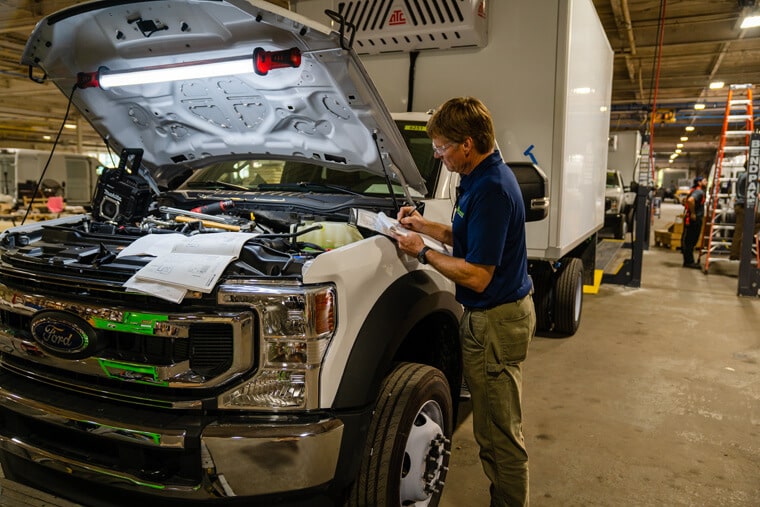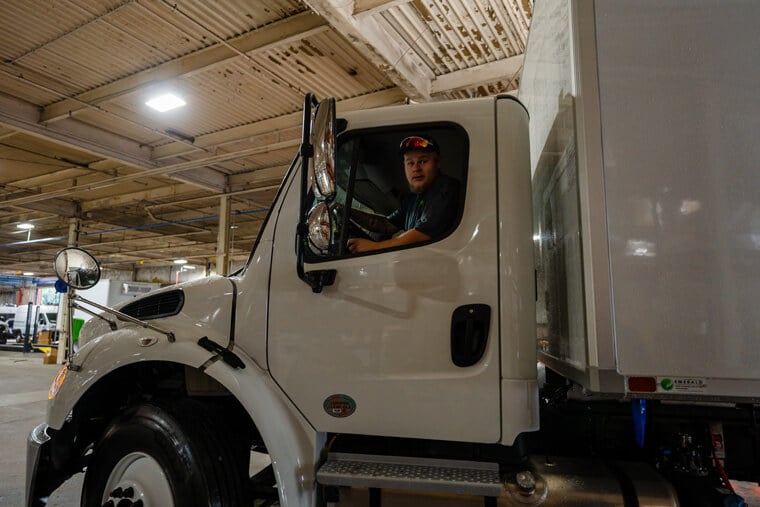
What You Should Know About the Cold Supply Chain
Joe Dickman | October 13th, 2020
As our nation’s highway infrastructure has continued to progress and evolve, so too has the way that companies use that infrastructure to deliver their products to the right destinations. Being able to order and ship items across the world has allowed a level of connectedness that our society has never known before. While there are many challenges that any company looking to expand their reach must overcome, there is an extra level of care that they must take during the shipping process if any items must be temperature controlled.
When strict temperature control is needed to keep items cold for their journey to the store, there is a need for what is referred to as a cold supply chain. A cold supply chain is when there is an unbroken chain of custody for your products that must remain within a strict temperature range during the shipping process. There are several steps in this process to ensure everything arrives in a safe condition. Here is what you should know about the cold supply chain process to help keep your products and your company safe.
Transporting Cold Goods
The first thing that comes to mind when talking about any supply chain is the shipping industry. Maintaining an active network of shipping companies through a third-party logistics service is an option, but it can often be more beneficial to run the whole process in-house to maintain accountability. To do this, you first need to find the right vehicle for the job. When trying to find the perfect refrigerated vehicle for shipping cold products, you should keep in mind what the needs of your company are. You want to ensure that your truck or van has the space to get all your inventory to the retailers that will be selling your product.
Aside from the obvious space concerns, you also need to keep the climate control capabilities in mind. Many refrigerated trucks and vans come equipped with a cooling unit that’s mounted directly onto the cargo bed and pumps cold air directly in. One consideration when selecting a vehicle is its refrigeration capabilities. There is no point in buying a work vehicle if it can’t reach the proper temperature range to keep your product safe. Some vehicles will also come equipped with special paneling along the outer surfaces that help lock in the cold air and prevent temperature leak. Another feature that some of these trucks and vans have is thermometers and temperature gauges to help you spot problems before they grow out of control.
Pack the Cold In
Just as there have been advancements in refrigerated trucking, progress has also been made on the packaging of cold products. Packing your products safely and securely during transport can help you avoid wasting ruined inventory. The emergence of polyurethane containers has helped revolutionize the shipping of cold products. These coolers are specifically designed to keep the product inside insulated, preventing the ambient temperature outside the coolers from impacting the items within. Depending on the product, it can be beneficial to add additional cooling aids to any coolers in the form of dry ice, gel packs, cold plates, or even liquid nitrogen.
When packing your products for shipment, it is important to remember that coolers and ice packs are great for transporting items that are already in the proper temperature range, but they will struggle to further lower the temperature. To avoid waste, make sure your product is already in the right temperature zone before packing and shipping.
Finding Cold Storage
With the drastic increase in shipping regulations over the years, it will be beneficial to establish a clear chain of ownership when shipping any items that require temperature control. By doing this, you can investigate at any step in the process who has possession of the product, where it has been, and where it is going. For most items, this will include the time spent in a temperature-controlled warehouse. It can be beneficial to spread your product out across multiple storage locations whenever possible to avoid a catastrophic failure at one site from ruining your entire shipment.
Renting or purchasing space in a warehouse can be a great way to extend your cold supply chain. There are several key features that you should consider when deciding where to rent from. One suggestion is to discover if their temperature control system can handle all your products’ ranges. You should also consider whether the warehouse is capable of helping resolve any problems in shipping or packaging by offering dry ice or some other form of refrigerant.
Things To Avoid
You can avoid many common issues in the cold supply chain process with some advanced planning. One such misstep starts with production, so be sure that all your products are properly cleaned, sanitized, and sorted before putting them into clearly labeled packaging. This will allow you to avoid most product mix-ups and the headaches associated with them. Speaking of packaging, you should always make sure that packages are properly sealed and protected to avoid any unwanted heat contamination.
There can also be problems with shipping that can impact your bottom line. One of these is not having the proper documentation for the items. This documentation can include any necessary shipping paperwork or product temperature logs. Having paperwork that is inaccurate can also be detrimental. It is also important to watch out for shipping delays. These delays can cause your products to fall outside of acceptable temperature ranges, negatively impacting the product’s integrity. You can partially prevent this with proper inventory and supply chain management.
A large amount of what you should know about the cold supply chain revolves around controlling the temperature of the product. At Emerald Transportation Solutions, our primary concern is helping you find the right climate-controlled truck or van at the right price. Whether you need to get ice cream to the grocery store or transport vaccines across the country, we have the right vehicle for you. Check out our supply of refrigerated vehicles for sale and see how we can help your business grow today!
Related Articles
Contact Us
Feel Free To Contact Us If You Have Any Questions
What does under DOT mean?
Questions regarding DOT requirements come up often. 10,000 lbs GVW (gross vehicle weight) and over are commercial vehicles that fall under the Department of Transportation regulatory requirements.
What is the difference between GVW and payload?
GVW or Gross Vehicle Weight is the entire weight of the vehicle including the payload. The payload weight represents the amount of cargo you are hauling.
What is a self-powered unit and a vehicle-powered unit?
A self-powered unit has its own fuel source and will run independent of the truck. This is the heaviest and most expensive option. While vehicle-powered units run off the engine via a compressor mounted on the engine. These are less expensive and lighter in weight but you must run the truck or plug the electric standby into shore power.
What does K-factor mean and why is that important?
K-factor is a term that stands for the overall insulating value of the container (truck body). Quite simply the lower the K-factor the better the truck body will be able to maintain a given temperature and require less energy to do so.
How much lighter is a Poly Van vs a US spec body?
Poly Van bodies are very light. On average we estimate we are 75-150 lbs per foot lighter than a traditional sheet and post foamed in place body. These weight savings translates to less fuel burn and less CO2 emissions, along with added payload, the most important benefit.







